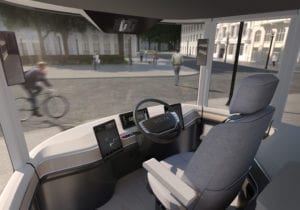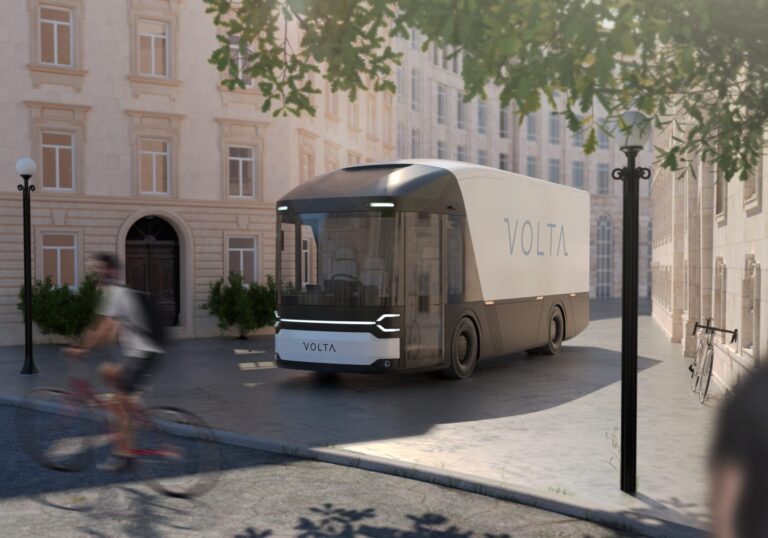Prodrive is working with Volta Trucks to help engineer its 16-tonne electric HGV, which is being designed to meet zero emissions requirements and to help keep vulnerable road users safe in crowded urban environments. A drivable demonstrator should be ready by early summer 2020.
The vehicle positions the driver low down, centrally and forward of the front axle, to provide uninterrupted vision at street level through 220 degrees.
By putting the driving in the centre of the cab at eye level with a pedestrian, and using extensive cabin glazing and replacing conventional rear-view mirrors with camera, dangerous blind spots should be eliminated. Passenger seating is arranged behind the driver, on either side.
Transport for London already has a star rating system for truck visibility called the Direct Vision Standard, which came into effect from October 2020. Prodrive believes the Volta truck will exceed that by such a margin as to set a new standard.
According to the London Mayor’s office, 23% of pedestrian and 58% of cyclist deaths in London involved a HGV, despite HGVs only making up 4% of road miles in the UK capital.
Steve Price, project leader at Prodrive, said: “Trucks face two major issues in an urban environment; not only are diesel engines rapidly becoming unacceptable but the category is disproportionately represented in accidents involving death and injuries among pedestrians and cyclists.
“Volta Trucks has taken the design opportunity provided by the switch to electrification to re-imagine the layout of a conventional truck and address emissions and safety concerns simultaneously.”
To further reduce potential hazards, the truck uses bus-style doors on both sides with a slide/swing action to minimise intrusion into the path of pedestrians or cyclists, and allowing the driver to easily access the central driving position.

To maintain compatibility with existing loading bays, the rear of the ruck and the tail lift arrangement follow conventional practice. This approach means the demonstrator vehicle can be created by combining an existing donor rear chassis ladder frame with the innovative cab and frontal arrangement.
Targets for the truck include a range of 100 miles (160km), a top speed of 50mph (80km/h) and a gradeability sufficient to negotiate on-off ramps and slip roads typical of urban elevated routes.
To maximise payload, the new cab will be a composite-clad spaceframe structure with the composite panels using natural rather than carbon fibres. The vehicle can be produced in a range of sizes from 14-18 tonnes.
Volta’s target is to show the finished prototype vehicle in mid-2020 and make it available for driving demonstrations later in the year. In parallel with the demonstrator schedule is a programme to manufacture a fleet of prototypes for field trials in London and Paris in 2021.
In order to meet the short timescales, Volta has brought a number of partners together including Astheimer, a specialist in automotive design, and Conjure for the HMI. Prodrive’s role is overall engineering responsibility for the vehicle and programme delivery, including cab, chassis and electrical architecture.
During the manufacture of the prototype batch, Prodrive will gradually hand over build responsibility to the confirmed production supplier, but will retain engineering responsibility and oversee ongoing development. The target manufacturing volume is 2,000 units per year.





